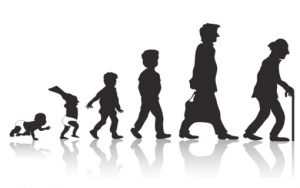Frequently Asked Questions
The overall benefits include improvement in perception, understanding and the ability to learn. We often see specific improvement in processing time, sensitivities, sleep patterns, awareness and attention, speech, memory, expression and social skills.
Natural Sensory Stimulation, delivered simultaneously, allows the brainstem area to learn or relearn Emergent Faculties (the efficient reception, processing and integration of incoming sensory information). This is a bottom-up approach to learning because the focus is on the subconscious re-education of the brainstem area rather than on higher cortical activity. Here, bottom-up refers to the fact that higher cortical activity such as memory and making decisions or comparisons is dependent upon the development, organization and functioning of the brainstem area. When the brainstem is inefficiently or ineffectively processing and integrating sensory inputs, higher cortical activity is automatically impaired. The Sensory LearningSM Program stimulates the brainstem area to integrate sensory experience as a whole, resulting in the ability to handle complex sensory activities and environments.
In the child with developmental delays, brainstem area organization receives the stimulation it needs to develop Emergent Faculties potential. In the individual of any age with an acquired brain injury, the Emergent Faculties, which have been impaired by the brain injury, are remediated. In the adult who is struggling with impaired executive function (the ability to reason, make sound judgments, and initiate, plan, and organize), higher cortical functioning improves as a result of improved subcortical (brainstem) area functioning. Research has shown that executive function problems are not localized in brain injury, but involve complex processes that include subcortical areas.
On the contrary, by stimulating the well-developed sensory systems concurrently with the weaker sensory systems, the Sensory LearningSM Program provides an overall experience that is often gentler and more easily integrated than singularly focused interventions. Because we do not experience life in isolated modalities, the Sensory Learning Program actually provides a more holistic approach to developmental learning than do individual therapies alone.
The Sensory LearningSM Program uses Enhanced Natural Sensory Stimulation consisting of an integrated, computer-controlled progression that stimulates a highly focused interplay between the participant's ocular, auditory and vestibular sensory systems. This program retrains Emergent Faculties by stimulating the three main sensory systems to learn or relearn subconscious reception, processing and integration faculties. There are many important considerations that support combining multiple sensory stimulations into an integrated approach:
Developmental Dynamics: The sensory stimulation present in the Sensory LearningSM Program is the same nurturing stimulation present in the womb.
Fully Engaging: The participant is fully engaged and can not tune out the experience as is sometimes possible when a sensory stimulation is given stand-alone.
A More Gentle Experience: When multiple sensory stimulations are combined as in the Sensory LearningSM Program, the participant's experience is actually more gentle. The participant finds this approach less overwhelming than their experience with a stand-alone stimulation when that approach is in an impaired area.
Supports the Deficited System: The combined ocular, auditory, vestibular sensory experience allows re-education of the participant's deficited sensory system in a more relaxed manner because their stronger sensory systems are also engaged.
Accelerating Sensory Integration: Sensory Integration is about re-educating the brainstem area to integrate sensory messages. When Enhanced Natural Sensory Stimulation is used to stimulate the brainstem area with integrated sensory input, Sensory Integration is enhanced in a positive and accelerated manner.
Noncognitive Learning Experience: Because the Sensory LearningSM Program is a noncognitive remedial learning experience, the participant does not have to think or engage conscious cognitive processes. This fact alone makes it possible to offer it to children as young as 2 1/2 years and to populations that may have difficulty participating in learning activities requiring cognitive processes.
Benefits: The benefits of sensory stimulation emerge more quickly and consistently when the modalities are delivered as simultaneous multiple sensory stimulations in an enhanced integrated approach.
While on the surface, learning problem populations and the acquired brain injury population are different, but our brains are more alike than they are different. There is a common underlying element present in the form of mild brain dysfunctions. These dysfunctions affect the brainstem area and result in disorganized and disintegrated sensory information processing that affects learning ability, behavior and executive function regardless of age. The Sensory LearningSM Program works with this brainstem area by remediating Emergent Faculties.
Sensory Integration is only one important aspect of the faculties included in the broadly defined category of Emergent Faculties.
Subtle changes are often seen immediately. Many participants experience results during the initial twelve days. Others see changes in cumulative skills unfolding over the following weeks or months. The Sensory LearningSM Program is typically a one-time undertaking with resulting benefits continuing to improve as sensory functions strengthen with daily use.



